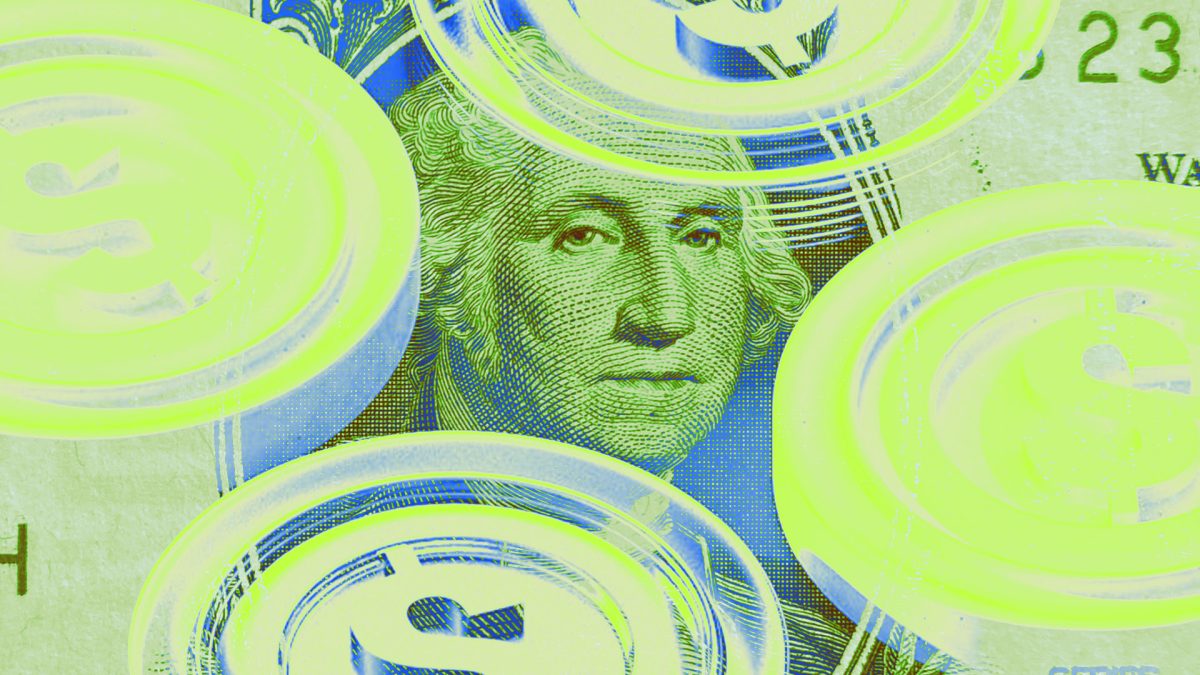Bernstein projects USDC stablecoin supply to triple by end of 2027, capturing one-third of market
Quick Take Analysts at Bernstein expect USDC’s supply to surge from 76 billion to 220 billion by the end of 2027, capturing one-third of the global stablecoin market. Circle’s regulatory compliance, liquidity head start, and partnerships with Coinbase and Binance are among the catalysts for market share gains as new U.S. stablecoin laws take effect, the analysts said.

Analysts at research and brokerage firm Bernstein project Circle's USDC will emerge as the main beneficiary of the new U.S. stablecoin regime, with supply estimated to nearly triple within two years.
In a note to clients on Tuesday, the analysts led by Gautam Chhugani said USDC's stablecoin market share could climb to 33% by the end of 2027 — gaining ground against rivals from 29% today — having already risen 6% in the past 18 months, as investors and payment platforms pivot toward regulated, dollar-backed tokens.
Tether's USDT remains the dominant stablecoin, accounting for over $180 billion (62%) of the sector's $290 billion market cap, according to The Block's data dashboard. USDC's share of stablecoin supply is worth around $76 billion, followed by USDe, Dai, and USDS with $12.6 billion, $5 billion, and $4.8 billion market caps, respectively.
The analysts argue that Circle's compliance-first model and partnerships with major crypto exchanges have created a liquidity advantage that is difficult to replicate, supported by integrations across 28 blockchains and deep distribution through Coinbase, Binance, and OKX. They estimated that Circle facilitated $3 trillion in USDC transactions in the first half of 2025 alone, up 120% from 2024 at the current run rate.
The passage of the GENIUS Act in July has further cemented Circle's position, the analysts said. The new law establishes a federal framework for "payment stablecoins," limiting foreign issuers and defining them as digital cash rather than securities or deposits. Bernstein said the high regulatory bar favors U.S.-based issuers like Circle, which already maintains full cash and U.S. Treasurys backing, daily reserve disclosures, and independent attestations. The analysts described USDC as "the largest regulated stablecoin globally" and said it is well placed to partner with banks and payment providers that need compliant infrastructure and are unlikely to issue their own tokens.
Bernstein expects the total stablecoin market to expand to $670 billion by the end of 2027, driven by growth in crypto capital markets and new use cases such as cross-border payments and remittances. Circle's share of that market would translate to $220 billion in USDC supply, supported by new integrations across Fiserv, FIS, Corpay, and Shopify, the analysts said. Bernstein also highlighted that other entrants, including PayPal's PYUSD and Tether's new U.S. subsidiary, USAT , face "cold-start" liquidity challenges and fewer exchange integrations.
Rate-cut risks and float-income resilience
Circle's financial model remains heavily dependent on float income from reserves, and looming rate cuts could reduce those earnings, though the analysts only expect interest rates to fall to around 3% by the end of 2027 from 4.25% today. However, Bernstein said expanding USDC supply, non-interest income such as cross-chain transfer fees and payments network income, and operating leverage should offset the impact, noting those have already risen from 1% of total revenue in 2024 to 4% in the first half of 2025.
Bernstein forecasts Circle's revenue to grow at a 47% compound rate through the end of 2027, driven by a 71% compound annual growth rate in USDC supply over the same period as the company scales its infrastructure and payment network.
Over the longer term, the analysts see stablecoins reshaping financial services and digital payments, projecting total supply to reach $4 trillion by 2035. They expect USDC to maintain about 30% of that market, supported by Circle's ongoing buildout of products like the Circle Payments Network and its purpose-built blockchain, Arc .
"Digital dollars will form the money-rail of the internet and Circle is best positioned given its headstart," the analysts wrote, reiterating their outperform rating and $230 price target for the stock — 67% to the upside from Monday's closing price of $137.47, according to The Block's Circle price page .
CRCL/USD price chart. Image: The Block/TradingView .
Disclaimer: The content of this article solely reflects the author's opinion and does not represent the platform in any capacity. This article is not intended to serve as a reference for making investment decisions.
You may also like
Fidelity Clients Pour $154.6 Million into Ethereum as Interest Rises
Quick Take Summary is AI generated, newsroom reviewed. Fidelity clients invested $154.6 million in Ethereum, signaling strong institutional interest. The move boosts overall crypto market confidence and mainstream adoption. Ethereum institutional investment continues to grow due to staking rewards and network upgrades. Fidelity’s participation highlights the merging of traditional finance and blockchain innovation.References JUST IN: Fidelity clients buy $154.6 million worth of $ETH.
Ethereum $10K Prediction: Tom Lee and Arthur Hayes Stay Bullish
Quick Take Summary is AI generated, newsroom reviewed. Tom Lee and Arthur Hayes predict Ethereum could reach $10,000 by end of 2025. Institutional adoption and clearer regulations support growth. Ethereum upgrades improve speed, efficiency, and scalability. Investors should research and diversify before investing.References BULLISH: Tom Lee and Arthur Hayes call for a $10k $ETH price.
Arthur Hayes Rejects Bitcoin Crash Theory Amid Monetary Shift
Crypto crash unlikely to have derailed ‘Uptober,’ analysts say
